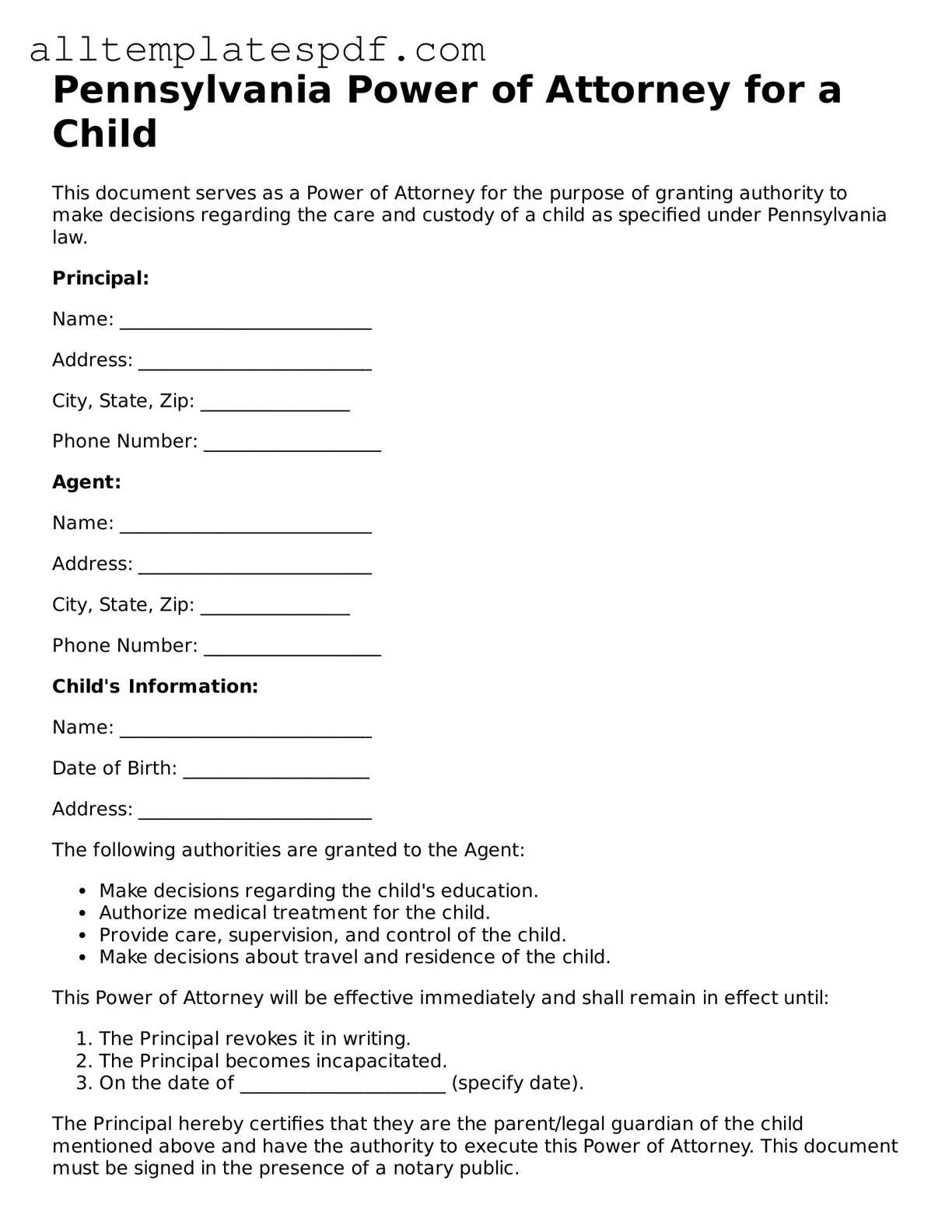Filling out the Pennsylvania Power of Attorney for a Child form can be a straightforward process, but many people make mistakes that can lead to complications. One common error is failing to provide complete information about the child. This includes not only the child's full name but also their date of birth and any other identifying details. Missing even one piece of information can create confusion and potentially delay the legal authority intended by the form.
Another frequent mistake involves not properly identifying the agent who will be acting on behalf of the child. The form requires the full name, address, and contact information of the agent. If any of this information is incorrect or incomplete, it can lead to issues when the agent tries to exercise their authority. It is essential to ensure that the agent is someone who can be easily reached and trusted to make decisions in the best interest of the child.
People often overlook the importance of signing the document in the correct places. Both the person granting the power and the agent must sign the form. Additionally, if the form requires witnesses or notarization, failing to include these steps can render the document invalid. It is crucial to carefully read the instructions and ensure that all signatures are obtained as required.
Another mistake involves not understanding the scope of authority being granted. The Power of Attorney for a Child form allows for various types of decisions to be made on behalf of the child, from medical decisions to educational matters. If the person filling out the form does not clearly specify what powers are being granted, it can lead to misunderstandings or disputes later on. Clarity is key to ensuring that the agent knows their responsibilities and limitations.
Lastly, individuals sometimes forget to keep a copy of the completed form. After filling it out, it is important to retain a copy for personal records and to provide copies to the agent and any relevant institutions, such as schools or healthcare providers. Without a copy, there may be confusion about the authority granted, and the agent may struggle to prove their legal standing when needed.
